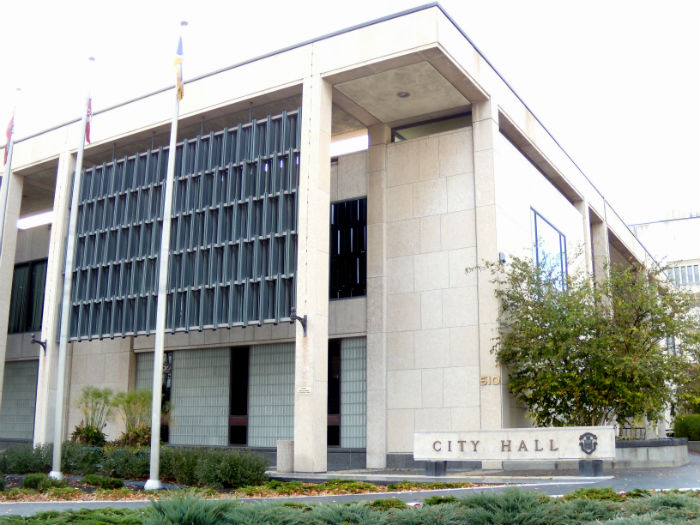It’s as if our mayoral hopefuls are standing atop those unsightly giant marbles that line Portage Avenue; their vantage points slightly higher up than the rest of ours, but not so elevated they can actually see the city en masse. The result: back-of-the-napkin proposals, unhinged from any sort of evidence-based footing, isolated from any sort of coherent, wider platform; populist, headline-seeking bumph unworthy of serious consideration were it not for the fact we now expect so little of our civic leaders, our standards for them so utterly diminished.
Those who vie for the Premier’s seat in the Legislature, or the Prime Minister’s chair in the House of Commons are held to a far higher standard. We demand from our provincial and federal leaders fully-costed, comprehensive policy platforms before we cast our ballots. Those journalists covering such elections scrutinize the parties’ platforms, and pillory those when their math doesn’t add up, or where their proposals don’t make sense. Surely, we should be holding those seeking municipal office—regardless of the absence of political parties—to that same level of scrutiny.
And yet. On public transit and policing, the downtown and aerial drones, grocery stores and garbage pick-up, red-light cameras and racism, our mayoral hopefuls have offered us little more than mush.
More cops! A downtown grocer! Fewer potholes! Smaller malathion buffer zones!
Absent from the endless stream of ethno-cultural selfies posted to candidates’ social media feeds, and the empty rhetoric of their campaign “announcements,” is a substantive discussion about the fundamental problem with Winnipeg: it is woefully unsustainable.
Over 50 years of unchecked suburban expansion—fuelled by the antiquated and wholly regressive property tax revenue model—has produced a city so terribly hollowed out at its core, so lacking in the kind of healthy density modern metropolitan areas require to be cost-effective in both maintenance and operation.
And yet. Our candidates seem determined to pave more roads, further and further afield, to service a seemingly endless outward expansion of the city’s suburbs.
- Judy Wasylycia-Leis is promising to, “take a bite out of Winnipeg’s infrastructure deficit” by spending an additional, “$60 million in local and regional roads over the next four years.”
- Gord Steeves, despite calling for a property tax freeze, wants to, “make sure 75 per cent of road construction [happens] 24-hours a day, seven days a week.”
- Brian Bowman would, “invest an additional $10 million dollars each year, over the next four years, into the city’s infrastructure budget to improve Winnipeg’s crumbling roads,” by finding, “two per cent savings in [the city’s] annual operating costs.”
- Robert Falcon-Oullette, with the most ambitious plan of the bunch, has tabled a, “$250-million plan to prevent and patch potholes, and pave Winnipeg’s worst streets.”
So much concrete. But don’t worry, our candidates also want a vibrant downtown, too!
Granted, not all candidates agree on what vibrancy actually looks like: Bowman, for example, has said, “our downtown needs to feel like a neighborhood for residents with similar amenities that many people currently enjoy in the suburbs.” That’s right, because what’s missing from downtown is the soullessness of the suburban wasteland, with its big-box stores, chain restaurants, eight-lane highways, and the near impossibility of actually getting anywhere on foot.
Newsflash: Winnipeg can’t have it both ways: city leaders and planners long ago sacrificed a people-centric urban community, for a car-centric suburban one. (The closure of Portage and Main to pedestrians was and remains a fitting metaphor.) We are now paying the price for their lack of foresight, and will continue to do so as our infrastructure crumbles more quickly than we can afford to replace it.
That’s not to say we should let our infrastructure crumble. However, any talk of spending money on improvements to existing infrastructure, let alone new construction, ought to be done with the recognition we can’t keep doing things like we have been doing them for the past 50-plus years.
And yet. Where is the moratorium on new suburban expansion; a realignment of civic planning around higher-density, infill development; a transportation plan that places a primacy on public transit, not private automobiles—and seeks out ways to make it more advantageous and affordable to choose the bus, a bicycle or one’s own two feet than the family sedan? At least when Gord Steeves calls for the cancellation of the southern BRT corridor, he’s being internally consistent with the rest of what passes for his platform. The other candidates seem convinced we can have it all. No, we cannot.
Are the costs associated with completing the southern transit corridor high? Absolutely. Consider, though, the distances that must be covered for the system to service so few people. Winnipeg’s urban density is nearly a third of Toronto’s or Chicago’s. Is this reason enough to cancel the project? No: a robust public transportation system is an essential mitigating measure to slow the sprawl and to begin the admittedly costly, but vitally important process of improving Winnipeg’s long-term economic and environmental viability.
And yet. Sadly, even a state-of-the-art rapid transit system won’t change prevailing attitudes. Is it any wonder our mayoral hopefuls don’t speak of sustainability, but instead talk of potholes? Winnipeggers are their own worst enemies: blissfully unconcerned with the implications of continuing to embrace an inefficient, unsustainable urban model, slavishly dependent upon concrete and gasoline.
Perhaps it isn’t just the candidates we need to be holding to a higher standard, but each other.
